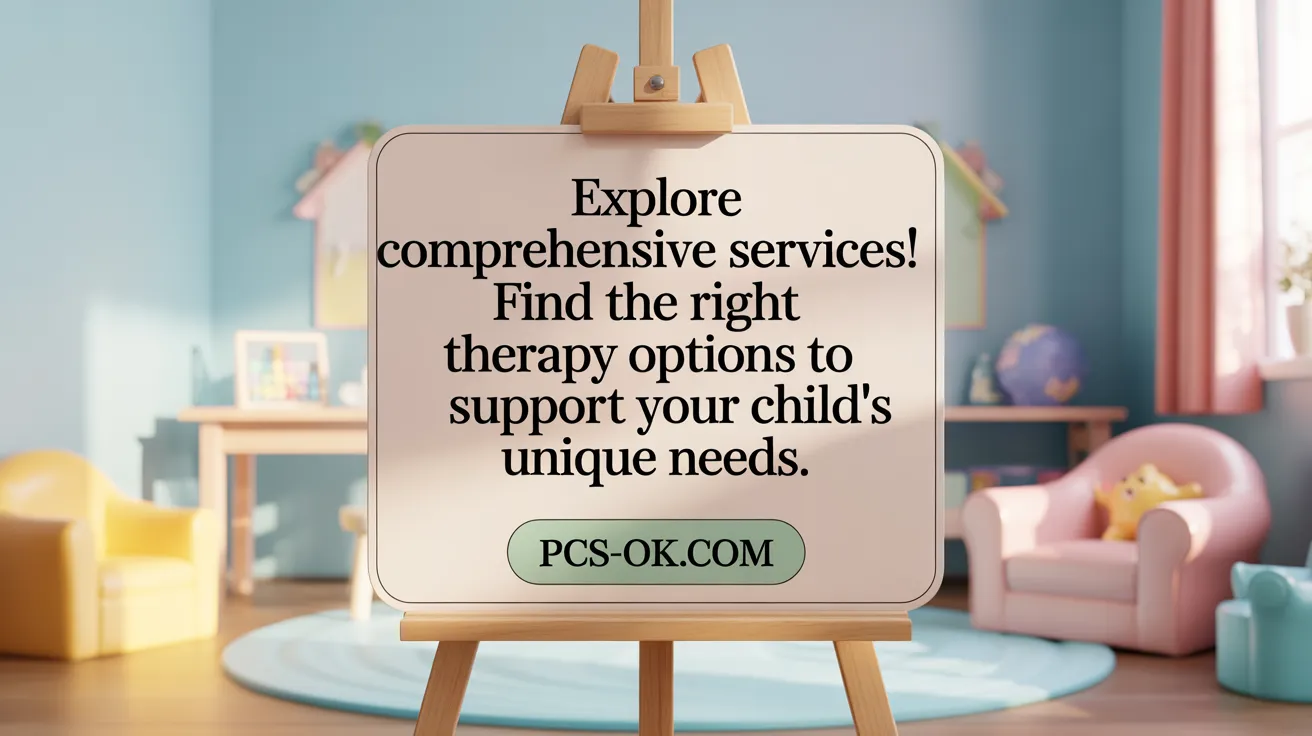How Families Access Pediatric Therapy Services
Understanding Pediatric Therapy Access
Accessing pediatric therapy services can be a critical step for families seeking support for their children’s developmental, physical, or behavioral needs. This article explores how families can effectively obtain these services, the types of therapies available, the processes involved, and the resources that can guide parents and caregivers through every stage of their child’s therapy journey.
Exploring the Spectrum of Pediatric Therapy Services

What types of pediatric therapy services are available, and how can they be obtained?
Children in need of developmental or health support can access a wide range of specialized therapy services tailored to their individual needs. These therapies include speech-language therapy, occupational therapy, physical therapy, behavioral therapy such as Applied Behavior Analysis (ABA), and early intervention programs. Each type focuses on different aspects of a child’s development—communication skills, motor skills, sensory processing, or behavioral challenges.
Speech therapy helps children improve language, communication, and feeding skills. Occupational therapy addresses adaptive behaviors, sensory processing, motor skills, and daily living activities. Physical therapy assists with gross motor development and coordination. Behavioral therapies, including ABA, are often used for children with autism and focus on improving social skills, communication, and reducing problematic behaviors. Early intervention targets children from birth to age three with developmental delays or disabilities, aiming to support growth in a critical period.
To access these services, families typically need an evaluation by healthcare professionals like pediatricians, psychologists, or licensed therapists to determine the child’s needs. Based on this assessment, providers may recommend specific therapies and facilitate referrals.
Services are frequently available through hospitals, clinics, schools, or community programs. Many services are offered at no cost if deemed necessary by an Individualized Family Service Plan (IFSP) team and provided by qualified, contracted providers. Families can also find therapy options through early intervention programs, which focus on children from birth to three years of age, or through private clinics and direct provider services.
Coordination with insurance companies, school systems, and healthcare providers helps families navigate access and develop tailored treatment plans. Offering services both in-person and via teletherapy enhances flexibility, especially for families in rural areas or with transportation challenges.
In summary, a comprehensive network of therapy options exists for children with developmental needs, with various access points designed to support families and promote optimal growth and development.
Initiating Pediatric Therapy: Processes and Procedures

Assessment and evaluation
Starting pediatric therapy begins with a thorough assessment conducted by trained clinicians. This process includes reviewing the child’s medical history, developmental milestones, and any existing diagnoses. Therapists observe and evaluate key areas such as motor skills, communication, sensory processing, and behavior. For example, in speech therapy, initial assessments might involve screening for language delays or communication disorders. These evaluations help identify the child’s unique needs and determine whether therapy is necessary.
Developing treatment plans
Following assessment, a personalized treatment plan is crafted in collaboration with parents, guardians, and the healthcare team. This plan outlines clear, achievable goals tailored to the child’s developmental level and family circumstances. Goals might include improving speech clarity, increasing motor strength, or enhancing social skills. The plan also specifies strategies and frequency of therapy sessions, such as intensive or periodic appointments, based on the child’s needs. Regular reviews at the end of each therapy episode help measure progress and guide future directions.
Therapy environment setup
Creating a welcoming, child-friendly environment is crucial for effective therapy. Spaces are often equipped with age-appropriate toys, adaptive equipment, and sensory tools to facilitate engagement and participation. Therapists may familiarize children with the environment beforehand through play or orientation activities, helping to reduce anxiety. For children with chronic conditions requiring multiple episodes, environments can be adapted over time to meet evolving needs, ensuring comfort and consistency.
Administrative procedures
Effective pediatric therapy also involves administrative planning. This includes establishing insurance and legal protections, securing funding when applicable, and developing referral pathways with physicians and specialists. Choices about billing, whether through insurance, Medicaid, or private pay, are clarified early in the process. Additionally, families are provided with educational resources and support to understand and participate actively in therapy. Maintaining accurate records and documenting progress aligns with best practices and regulatory requirements.
| Step | Description | Example / Additional Info |
|---|---|---|
| Assessment | Comprehensive evaluation of developmental, medical, and behavioral needs | Speech, motor, sensory assessments |
| Treatment Planning | Creating tailored goals and intervention strategies | Focused on child’s specific delays |
| Environment Setup | Preparing a child-friendly, engaging space | Use of toys, sensory aids, familiar routines |
| Administrative Procedures | Handling insurance, billing, referrals | Securing funding, sharing progress notes |
Through these steps, pediatric therapy is initiated smoothly, setting the stage for positive developmental outcomes. Families are encouraged to stay engaged and communicate openly with therapists, ensuring the therapy process is supportive and effective.
Scheduling Models and Their Benefits in Pediatric Therapy

What are the common models of therapy scheduling, and what are their benefits?
In pediatric therapy, several scheduling models are employed to meet the diverse needs of children and their families. One widely used approach is episodic scheduling, which structures therapy into specific episodes focused on targeted goals over a defined period. At the end of each episode, therapists review progress to decide whether to continue, start a new episode, or discharge the child. This model allows for regular assessment and goal adjustment, ensuring therapy remains effective.
Therapy sessions are often categorized based on frequency. These include Intensive sessions, held multiple times per week for rapid progress; Weekly sessions, which allow for steady development; Periodic or monthly sessions, suited for managing ongoing needs; and Consultative services, which provide specialized support as needed.
Benefits of these flexible scheduling options include better outcomes due to tailored interventions, increased participation from children and families, and adaptability to family routines. For example, intensive scheduling provides focused, short-term therapy for urgent needs or specific goals, while periodic sessions accommodate children with chronic conditions over time.
Families also benefit from increased appointment availability and reduced wait times. Incorporating technology such as online booking and reminder systems further streamlines scheduling, reduces missed appointments, and improves overall satisfaction. Outreach and community-based services, like home visits or after-hours appointments, help overcome logistical barriers, particularly for disadvantaged families.
Ultimately, choosing the right scheduling model depends on balancing the child’s developmental needs with family circumstances and clinic capacity, aiming for sustained progress and a positive therapy experience.
Coverage Options and Eligibility for Pediatric Therapy Services

What are the typical coverage options and eligibility criteria for pediatric therapy services?
Pediatric therapy services can be covered through various sources, ensuring that children receive the support they need. Common coverage options include private health insurance plans, Medicaid, and specific government-funded programs. For example, children enrolled in programs like CalWORKs’ CCS (California Children’s Services) may qualify for comprehensive coverage that includes physical, occupational, speech, and behavioral therapies.
Eligibility for these services often depends on several factors. These include the child’s diagnosis, age—typically up to 21 years—and residency within a certain geographic area. Financial status can also influence eligibility, with programs such as Medicaid and CCS offering assistance to families with limited incomes. Some services, like those provided through the IDEA Part C system in Arizona, are tailored for children from birth to age three with developmental delays or disabilities.
Insurance coverage is guided by rules established under the Affordable Care Act, which ensures that pediatric therapy services are included in many health plans. Coverage details—such as copays, deductibles, and limits on the number of visits—vary by individual insurance policies. Usually, benefits are extended to children with documented needs, often requiring assessments and approvals by healthcare providers.
To navigate these options effectively, families should verify their coverage directly with their insurance providers, inquire about necessary prior authorizations, and understand what therapies are included. Being proactive helps avoid unexpected expenses and ensures seamless access to essential services.
In summary, eligibility hinges on clinical necessity, legal and policy guidelines, and individual insurance or program criteria. Consulting with healthcare providers and insurance representatives is a recommended step for families to secure appropriate and comprehensive pediatric therapy coverage.
Resources, Support Programs, and Additional Guidance for Families

How can families access pediatric therapy services for their children?
Families seeking pediatric therapy services can explore several avenues to ensure their children receive the support they need. In Ohio, for instance, parents often start by consulting their child’s pediatrician, who can provide referrals or direct families to local providers specializing in early intervention. Organizations such as TheraPeds operate across the state, offering services like speech, occupational, and behavioral therapy at dedicated early learning centers, ensuring rapid evaluation and prompt care.
Additionally, the Ohio Pediatric Mental Health Care Access Program (PMHCA) plays a crucial role by supporting primary care providers through training, teleconsultation, and care coordination, making mental health support more accessible. Families can also directly refer children to programs by calling or submitting online forms, where developmental screenings and resources are provided. Despite these options, disparities may exist due to insurance coverage or provider availability, but ongoing efforts aim to reduce wait times and improve equitable access for all children.
What resources and guidance are available for parents and caregivers seeking pediatric therapy?
Parents and caregivers have access to numerous tools and sources of support that aid in navigating pediatric therapy. Reputable organizations like the STAR Institute, STAR Autism Support, the ICDL’s DIRFloortime®, and the National Stuttering Foundation provide specialized information and programs tailored to various developmental needs. Websites such as Kidsource Therapy and North Shore Pediatric Therapy offer practical guidance, including milestone checklists, activity ideas, and educational materials, promoting active participation in therapy.
These resources emphasize the importance of early intervention and often feature links to qualified providers. Many offer parental guides, expert advice, and supportive community connections, helping families understand their child’s developmental journey and empowering them to collaborate effectively with therapists to customize intervention strategies.
Empowering Families Through Knowledge and Support
Families seeking pediatric therapy services benefit greatly from understanding the types of therapies available, the initiation process, scheduling models, and coverage options. By leveraging available resources and support programs, they can effectively navigate challenges and secure necessary care for their children. Advances in scheduling flexibility, teletherapy, and community outreach continue to reduce barriers, while comprehensive guidance empowers parents and caregivers to actively participate in their child’s developmental journey. Ultimately, informed families are best positioned to access quality pediatric therapy services that foster their child’s growth and well-being.
References
- New therapy scheduling process improves access and …
- Information on Therapy Services | Arizona Department of …
- Parents’ ability to access community health occupational …
- Learn About Our Pediatric Therapy Programs
- Little Roos Pediatric Therapy | Pediatric Therapy & Infant …
- Resources for Families in Arizona
- Pediatric Speech Therapy in Arizona | ETS
- Tools To Grow, Inc. | Pediatric Occupational, Physical, and …
- Child and Adolescent Mental Health
